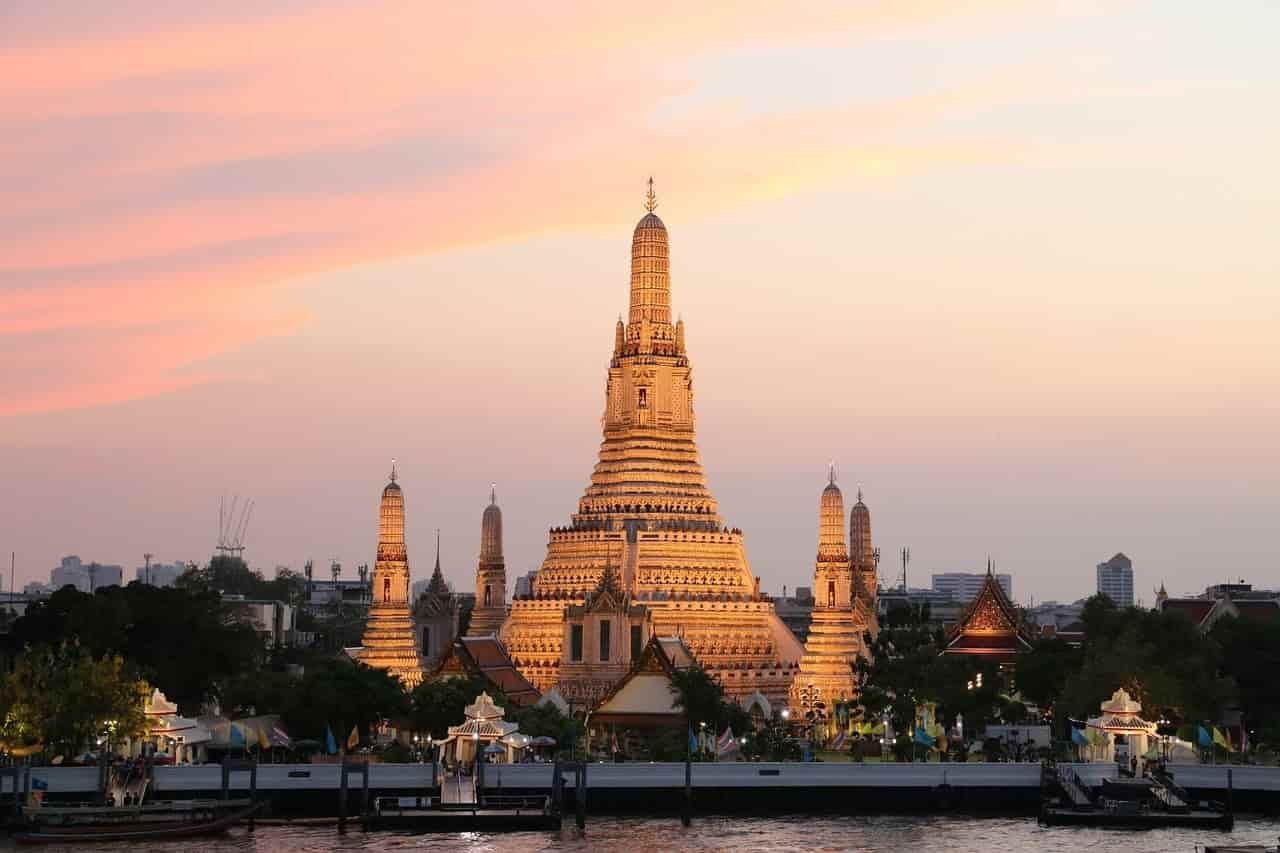Wat Arun Temple
With its elegance, abundance, architectural richness and location, the Wat Arun temple is one of the most symbolic and most visited buildings in Bangkok. Don’t forget to visit this temple if you are in Bangkok!
Wat Arun or “Temple of Dawn” is located in the district of Bangkok on the opposite bank to the historic center of Bangkok.
History of the Arun Temple in Bangkok
It was built after the fall of Ayutthaya on the site of an ancient temple.
He hosted the Emerald Buddha before it was transferred to the Palace in Bangkok.
King Taksin, reuniting the country after his fall during the Burmese wars, founded his new capital around the temple: Thonbori.
His assassin and successor, Rama I of the reigning Chakri dynasty until today, moved his capital to the other side of the Chao Phraya river.
And… Bangkok was born.
Wat Arun, a Buddhist temple with Hindu references
On the bank opposite the Old Town of Bangkok in the district of Bangkok Yai sits what was for a long time the tallest building in Bangkok. The main pyramid or prang has a height between 66 and 82 meters depending on the sources.
Although it is a Buddhist temple, the pyramid symbolizes Mount Meru crowned with the trident of Shiva. It is surrounded by more modest pyramids dedicated to the god of the wind: Phra Pai.
The majority belief system in Thailand combines animistic spirit worship, Hinduism and Buddhism.
The religious complex around the Temple of Dawn includes several other newer temples and a Buddhist monastery. The visit of the set will take you about an hour or even a little more if you are a wisp of photography.
Read also: Bangkok: the complete guide to discover the Thai capital
Useful information
The temple is open daily from 7:30 a.m. to 5:30 p.m. The entrance fee is 100 THB on June 1, 2022 for non-Thais. Access is free for Thais. You will be asked to have your legs and shoulders covered.
You can take the ferry to cross the river from Wat Po to Wat Arun and vice versa (price: 4 Baht).
How to get there?
In particular, you can get to Wat Pho using the Chao Phraya Express (Ta Tien stop) and then use the ferry to cross to Wat Arun. BTS joins the Chao Phraya Express at Saphan Taksin. By MRT metro, get off at Itsaraphap station, you will have a 10-minute walk to reach Wat Arun. Otherwise, bus lines 19, 57, 83.
Notes from the past
The exact date of foundation of the temple is not mentioned in historical sources. Strong evidence claims that an ancient monastery by the name of Wat Makok once existed at the site since the Ayutthaya era. It was around the middle of the 17th century.
Wat Arun takes its name from Aruna, the Hindu sun god. Where does the name “Temple of Dawn” come from, by which it is designated in travel guides.
The temple originated during the golden age of Thonburi, which succeeded the bygone kingdom of Ayutthaya. After taking Thonburi, Taksin the Great fulfilled his wish to the Buddha to restore his temple if he succeeded in crushing the Burmese. The new construction is called Wat Chaeng.
The Emerald Buddha was kept there from 1770 until 1785, when it was moved to the Grand Palace.
When Rama I dethroned Taksin by killing him and had himself crowned king, Wat Arun suddenly lost its title of “royal temple” in favor of Wat Pho. Indeed, the founder of the Chakri dynasty decided to build a capital on the eastern bank of the river: the future Bangkok.
Long years of decadence followed. In the 19th century, the building was completely restored at the request of Rama II. Work continued until the reign of Rama III. The main sanctuary-tower dates from this period. Wat Arun owes its current form to recent alterations carried out between 2013 and 2017 under the patronage of the Thai Department of Fine Arts.
The cement was replaced by white lime to respect the original architecture of the monastery.
Wat Arun today
Wat Arun is one of the three most visited pagodas in Bangkok, along with the Temple of the Reclining Buddha and the Temple of the Emerald Buddha. To what do we attribute this attractiveness? On the one hand, we will appreciate the superb setting on the banks of the Chao Praya River.
On the other hand, it is a real delight to discover Hindu iconography in a place of worship frequented by Buddhists.
However, the unique charm of the temple is due to its dreamy architecture, which combines a Khmer-style mountain temple with delicate porcelain and shell mosaics. For information, sugar loaf structures are characteristic of primitive Hindu art. The trompe-oeil is totally successful, giving the illusion of traveling to Bagan or the Dravidian ruins of Karnataka.
Sources: PinterPandai, Tourism Thailand, Your Thai Guide
Photo credit (main photo): CarinaHofi / Pixabay



